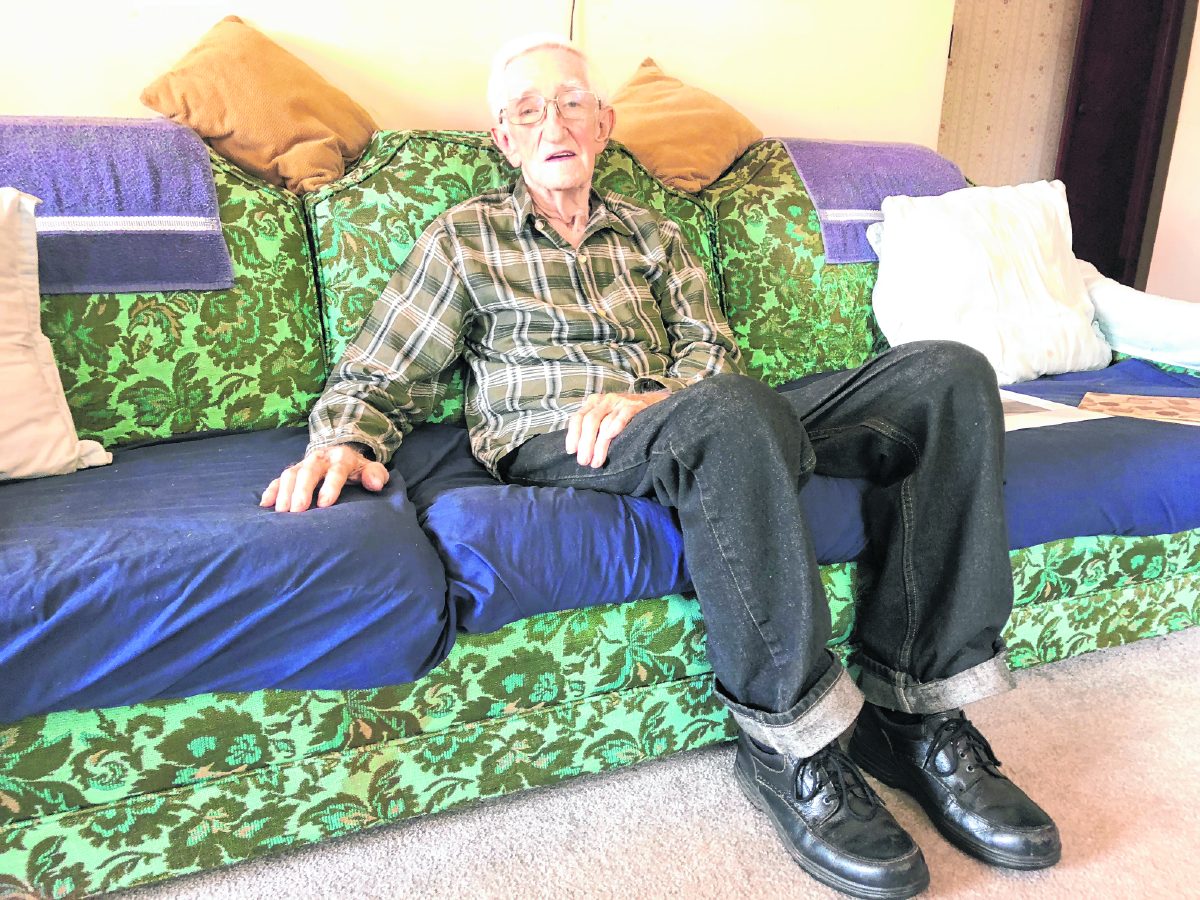Behind a walled-off section of an Indianapolis factory, a key component of the first moon landing was coming together.
A select team of employees at Stewart Warner Corp. were fabricating a helium heat exchanger for the lunar module. Among them were Oran Mitchell, a Whiteland resident and metal fabricator.
“I was pretty surprised to be working it. There were just three of us there,” Mitchell said. “It was blocked off from the rest of the factory. I had to go through a gate to get in there.”
[sc:text-divider text-divider-title=”Story continues below gallery” ]
As the Apollo 11 mission landed on the lunar surface, Mitchell was able to witness his hard work in action. He was driving back from Cleveland when the landing happened, listening to history being made on the radio.
“I was happy they had done it. I’d done a lot of things, but nothing like that,” he said.
Mitchell has lived a varied life. He grew up in the area just south of Franklin, then worked as a farmer before finding a job with R.G. Letourneau, helping manufacture road-grading machinery. Throughout his life, he built houses all over Johnson County, being a skilled craftsman.
One of the most noteworthy parts of his career was working at the Thomas L. Green Company, an Indianapolis business that made baking machinery. Mitchell was hired to be a sheet metal fabricator for the companies baking machines.
The company was owned by the Lugar family, including Dick Lugar, the company president who would later go on to serve a noted career in Indiana and national politics. Mitchell has fond memories of interacting with him over the years; he appreciated the way they ran the company.
“You could express your faith. You felt free to speak your mind on however you believed, and I liked that,” he said.
Though Mitchell very much enjoyed his time at the Thomas L. Green Co., he left his position to lay the foundation for the home he was building in Whiteland. The Lugars tried to convince him to return to the company when he was finished, but Mitchell wanted a new challenge and experience.
So Lugar put in a recommendation for him at the employment office, which led to him earning his position at Steward Warner’s South Wind Division in Indianapolis.
“I believe (Lugar) had a big part in me going there,” Mitchell said.
Steward Warner had been awarded a contract by NASA to make the helium heat exchangers for the Apollo program. The exchangers allowed the lunar module to descend correctly and land gently. He used the designs provided by NASA, and assembled the 10-inch by 12-inch out of titanium and other alloys. The pieces had all kinds of odd shapes sticking out of it, and creating one took a considerable amount of time.
The pieces were soldered together with gold dust. Mitchell helped build several copies of the part, pressure-testing them before shipping the heat exchanger to NASA.
Mitchell worked on the project for five years, until NASA stopped sending people to the moon and his job was no longer needed. At the time, Mitchell didn’t think much about the impact of his role in the lunar landing.
He was just doing a job, he said.





